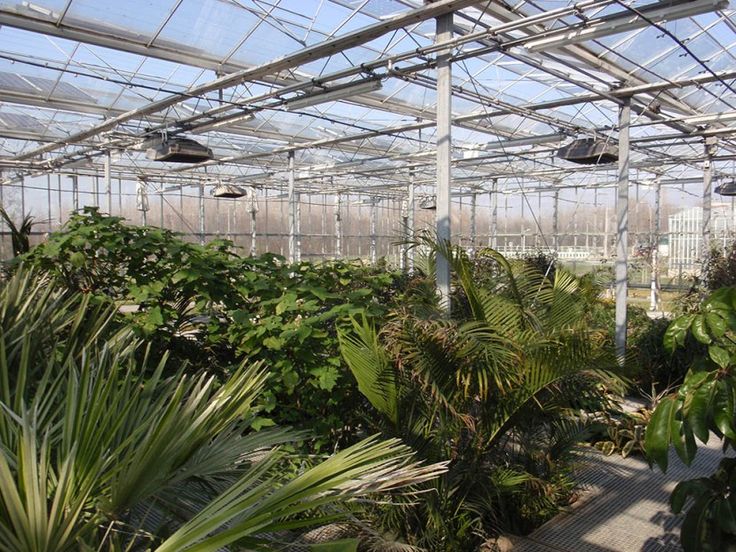Posted on August 20, 2015
What the water industry can take away from an animated movie set in prehistoric times
by Renee Gu, Market Analyst Intern at Organica Water
“Fear keeps us alive, never not be afraid”
Does this ring a bell to you? It is the motto of the cave-dwelling family in Dreamworks’ 2013 animated movie “The Croods.” The movie was nominated for an Academy Award for Best Animated Feature, and deservingly so. Powerful messages are embedded in the storyline, which could easily resonate with everyone about how threatening change and innovation can feel in his/her own vocational life. Over my short time at Organica Water so far, I have been able to draw significant parallels between the Croods (the movie’s namesake prehistoric family), and the water industry (specifically the wastewater treatment sector). I aim to expound these connections and explore what The Croods can teach us about the value of doing things differently.
Living in prehistoric times, the Croods survived by two simple rules — “Never leave the cave” and “Never do anything new or different.” This belief was instilled into the family by the archetypal all-protective dad, Grug, who told a bedtime story every single night about how curiosity was dangerous and deadly. This philosophy of “living” was brainwashed into every family member everyone except Eep (the rebellious teenage daughter with a curiosity about the outside world). Interestingly enough, I found this family’s first principle of surviving similar to the historically conservative water utility industry.

Subject to strict regulations, water utilities are responsible for the distribution of clean water and collection/treatment of wastewater. Since the sector is capital intensive and highly correlated to quality of life, failure is not an option when it comes to trying something new. In fact, some consider this an industry where legitimate innovation cannot secure the funding it needs. According to Reuters, “when start-ups try to sell their technologies to utilities focused on ensuring a regular and clean supply of water, new ideas take a back seat to safety and reliability.” Such conservatism that has long been held by the industry’s decision makers is hard to change.
“The World Is About To Change”
What forced the Croods to move out of the cave that they inhabited forever was an impending natural catastrophe of earthquakes, volcanic activities and major tectonic shifts. Since the family never took the chance to explore the outside world, they had no clue that the cave that has always shielded them from danger was about to collapse. It was only upon the family’s realization of imminent life-or-death that forced them to embrace change and embark on the journey of a lifetime in a crumbling and dangerous world.
Then what about the world that we live in? By 2025, 1.8 billion people will experience absolute water scarcity, and two-thirds of the world’s population will be living under water-stressed conditions. Today water utilities around the world are faced with enormous industry challenges: aging infrastructure, climate change, water scarcity, capital shortage, urbanization, demographic changes, increasingly stringent regulations and the list goes on. According to a 2011 report by the Environmental Protection Agency (EPA), a significant amount of drinking water supply and treatment facilities in the United States need to be upgraded or replaced. The estimated cost of capital improvement for the public water system infrastructure would be nearly $384.2 billion over the next two decades.
“No more caves, Grug.”
When Grug kept advocating fear and rules to follow, Guy, an orphaned teenage boy, came on the scene and warned the family about the coming disaster. He proved the necessity and superiority of his adaptation as his innovative ideas challenged Grug’s traditional ways. The world is constantly changing. The safety and rules that are passed down from the past are not always applicable and sufficient. This happens to be the same situation for water utilities. The way we have been managing wastewater does not provide a foothold for a sustainable future.
Traditional centralized wastewater management usually employ large networks of pipelines to collect and transport the wastewater into large, smelly and unsightly treatment facilities located outside of towns and cities, far from where people live and work. Most water and sewerage companies have traditionally focused on managing their assets to maintain serviceability to reduce costs rather than on service improvement through technical innovation. Some of the sewer pipes, which have an approximate useful life of 50 to 75 years, have been in service for more than 100 years. The pipelines, to a great extent, are the crux of matter.
The effort and money spent on maintaining and saving these pipes is enormous. It has become commonplace for water and sewer systems to break down – and this is happening all across the United States. According to a New York Times analysis of EPA data, a significant number of water lines burst every two minutes on average somewhere in the United States. Furthermore, this trend is certain to continue as urbanization aggregates people together and climate change brings more frequent and more severe extreme weather events. People are reluctant to live around conventional wastewater treatment plants (WWTPs) due to their odor, unappealing look, and adverse psychological effect. The only way a conventional wastewater management solution can continue to serve us in the future is to bury more pipelines and move further, and further away from the source – this is unsustainable.
What else? If we are considering using the reclaimed water to cope with water scarcity – similar to how California develops wastewater reuse projects to curb the effects of severe drought – the mileage of pipelines would effectively double since the treated wastewater needs to be pumped and transported back to where it is needed. This would require more capital investments in an industry that is already short of funds.
“Into The Light”
Guy was on his way to “tomorrow”, “a place with more suns in the sky than you can count.” He is considered to be the anti-Grug. We at Organica Water see ourselves in the same way: we are the anti-status quo. Along the journey, Guy teaches the Croods how to make fire and introduces them to rudimentary ‘shoes’ to walk over the harsh landscape. They meet many dangers and suffered great hardships, but the Croods were able to adapt and change the rules that had kept them in the dark — they stayed out, wherever they could, to follow the light. The Croods’ family motto evolved from fearing change to embracing change.
Reflecting on Grug’s decision to move out of the comfort zone, it is still a challenge for the water industry to find a way of investing in new technologies. It is a highly regulated sector, and water utilities seem hard to accept the change even though there is no shortage of great innovations. According to the Global Water Intelligence Magazine, “it takes seven years for a new technology to enter the water market” and there are many examples of where it took over a decade to fully commercialize new water technologies.

However, a shift towards the light is indeed happening. “A wave of start-ups is rising up to address the growing need for wastewater treatment and monitoring solutions: part of a $600 billion industry that has traditionally been dominated by legacy companies such as GE, Veolia, Siemens and Suez”, reported a Forbes columnist.
Organica Water is proud to be at the forefront of this push for innovation. With more than two decades of experience and still constantly evolving, the solution that Organica provides enables wastewater treatment plants to efficiently use space and energy, as well as the combination of architectural and engineering disciplines, to blend harmoniously into urban and residential population centers. This ultimately prevents utilities from having to make huge capital replacements and unnecessary repairs, facilitating water reuse for future consideration. This solution is just like those innovations that helped the Croods get to their land of tomorrow. The only question that remains is whether you are willing to accept this change or not.
“From now on, we stay out here, where we can follow the light”
There will always be situation where we are forced to move out of our “comfort zone” and follow the light. Whatever pain that is, the loss of a beloved home, extreme financial hardship, or the increasing risk of water scarcity (for the water industry), that pain has forced us out of the “cave” and required us to come up with solutions to face the change.

The panic when the Croods had to leave their cave and out into the open was real. So many differences and uncertainties will always lead to fear. But when hiding back into the cave is no longer an option, we will have no choice but to let ourselves out, just like how the Croods changed the rules that kept them in the dark. What I liked most about The Croods is not the animation or star-studded cast that voiced the characters, but the important lesson it taught me. It reminded me that innovations and a willingness to try something new are what will help society evolve and manage change. It encourages us to step outside of the box, outside of our conventional ways of thinking, and believe we have what it takes to manage the challenges of a rapidly changing world.
And at Organica, that’s exactly what we’re doing with wastewater management.

